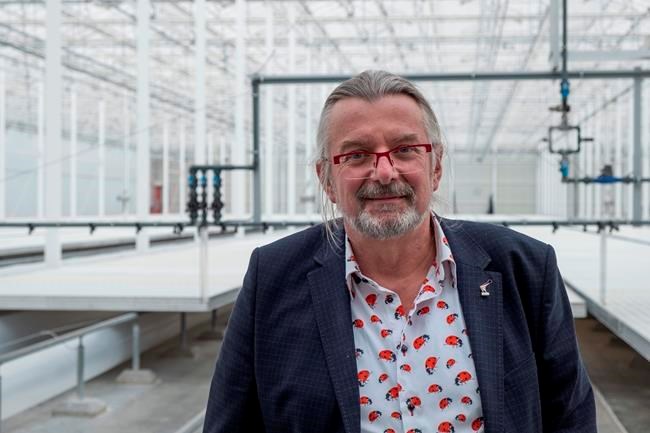MONSTER, Netherlands — Dutch cress grower Rob Baan has enlisted high-tech helpers to tackle a pest in his greenhouses: palm-sized drones seek and destroy moths that produce caterpillars that can chew up his crops.
“I have unique products where you don’t get certification to spray chemicals and I don’t want it,” Baan said in an interview in a greenhouse bathed in the pink glow of LED lights that help his seedlings grow. His company, Koppert Cress, exports aromatic seedlings, plants and flowers to top-end restaurants around the world.
A keen adopter of innovative technology in his greenhouses, Baan turned to PATS Indoor Drone Solutions, a startup that is developing autonomous drone systems as greenhouse sentinels, to add another layer of protection for his plants.
The drones themselves are basic, but they are steered by smart technology aided by special cameras that scan the airspace in greenhouses.
The drones instantly kill the moths by flying into them, destroying them in midair.
“So it sees the moth flying by, it knows where the drone is ... and then it just directs the drone towards the moth,” said PATS chief technical officer Kevin van Hecke.
There weren't any moths around on a recent greenhouse visit by The Associated Press, but the company has released video shot in a controlled environment that shows how one bug is instantly pulverized by a drone rotor.
The drones form part of an array of pest control systems in Baan's greenhouses that also includes other bugs, pheromone traps and bumblebees.
The drone system is the brainchild of former students from the Technical University in Delft who thought up the idea after wondering if they might be able to use drones to kill mosquitos buzzing around their rooms at night.
Baan says the drone control system is smart enough to distinguish between good and bad critters.
“You don’t want to kill a ladybug, because a ladybug is very helpful against aphids," he said. "So they should kill the bad ones, not the good ones. And the good ones are sometimes very expensive — I pay at least 50 cents for one bumblebee, so I don’t want them to kill my bumblebees.”
The young company is still working to perfect the technology.
“It’s still a development product, but we ... have very good results. We are targeting moths and we are taking out moths every night in an autonomous way without human intervention," said PATS CEO Bram Tijmons. "I think that’s a good step forward.”
Baan also acknowledges that the system still needs refining.
"I think they still need too many drones ... but it will be manageable, it will be less,” he said. “I think they can do this greenhouse in the future maybe with 50 small drones, and then it’s very beneficial.”
Mike Corder, The Associated Press




